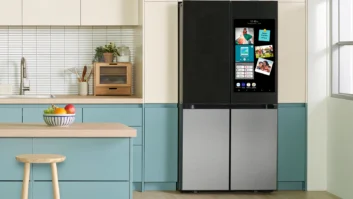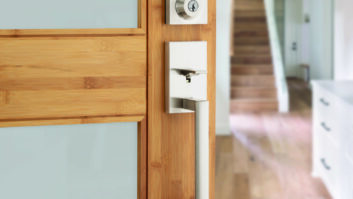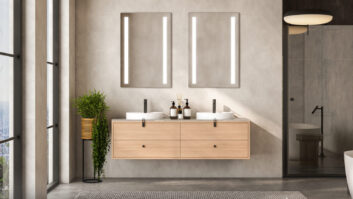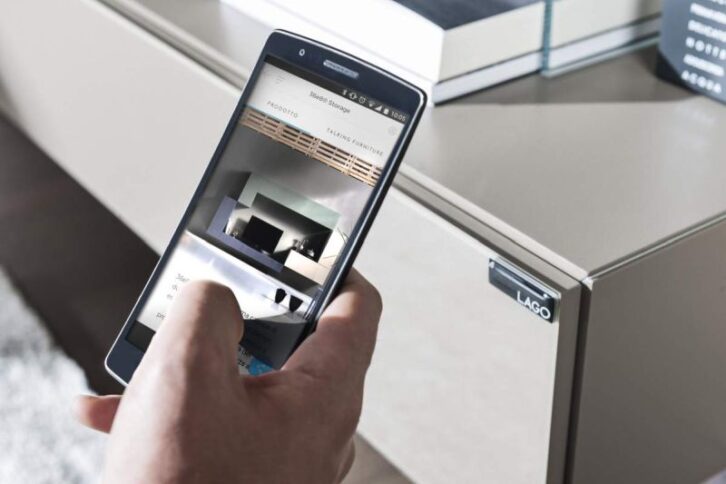
We live in an age of smart cars and coffee makers and it was only a matter of time before our home furniture got swept up in the trend, as well. Sofas are no longer just for sitting, and tables aren’t just a place for your coffee mug now if you haven’t heard. We have entered the era of smart furniture, where home decor and technology intertwine. Now your coffee table can charge your phone while your sofa can adjust firmness based on your voice command. Your home will never be the same again.
A New Frontier for the Home
The aim of smart furniture is simple: make life easier by weaving advanced technology into everyday household items. You might, at first, think that these are trivial gadgets or fleeting novelties, but the truth is that the upgrades smart technology brings to your furniture are truly neat and convenient, if not revolutionary. An example of this is the new sit-stand desks that are programmable and come with built-in height settings. They aren’t just adjustable – they can remember your preferred positions and automatically shift at different times, which benefits your posture and overall well-being.
Another fascinating invention is the smart bed. No longer just a place to sleep, your bed can now come with sensors and controls that let you adjust everything from mattress firmness to the angle of the headrest. Some models will also feature sleep tracking, vibrating alarms, and temperature control to keep you comfortable throughout the night.
Tech Meets Aesthetics
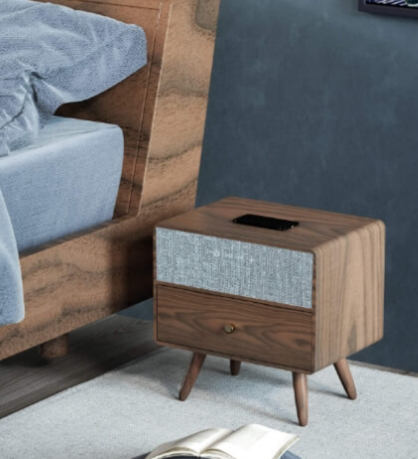
The idea of integrating technology into furniture was initially seen as cumbersome and inelegant. That said, newer designs are starting to emerge that allow for both high-tech functionality and sleek, minimalist designs. These new designs include features like LED lighting and touch-sensitive surfaces, along with hidden compartments to hide wires and components, which prevent them from detracting from the look of the piece.
In fact, some smart furniture is so well designed that the technology is virtually invisible. An example of this would be a sleek coffee table that wirelessly charges your devices just by placing them on the surface using NFC (near-field communication) technology. No cords or clunky charging pads in view. Or imagine a stylish lamp that allows for adjustable lighting but also doubles as a Wi-Fi extender without showing signs of being one.
Comfort and Convenience
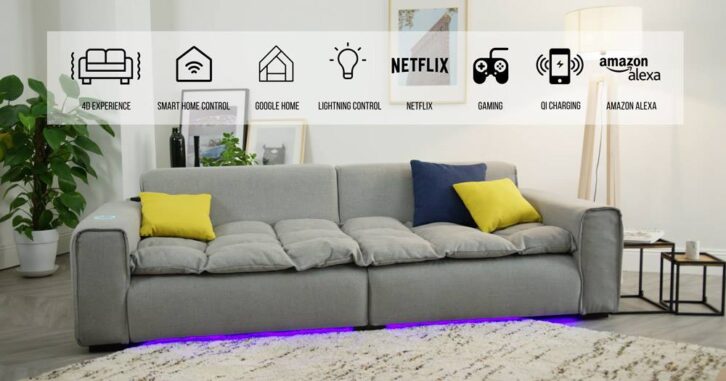
Smart furniture is also becoming more and more accessible to the public. Brands across the spectrum are investing in smart furniture technology and this is making it a lot easier for consumers to integrate these sci-fi pieces into their homes.
At the same time, smart furniture has genuinely shown itself to be great at providing both comfort and adaptability. There are sofas you can now control via an app or voice commands to Alexa or Google Assistant. You can adjust the firmness, elevate the leg rest, or even turn on a massage gesture. Some come with built-in coolers, USB ports, and speakers – an all-inclusive, luxury relaxation experience.
Comfort doesn’t end on the sofa, though. Some smart wardrobes can now rotate your clothes for you so you can reach certain items more easily and can even come with built-in humidity controls to keep your clothes fresh!
And then there’s smart kitchen furniture—tables with built-in cooktops that allow you to cook and serve food at the same table, chairs with temperature control, and smart cabinets that can take an inventory of your groceries and suggest recipes based on what you have.
The Smart Home Ecosystem
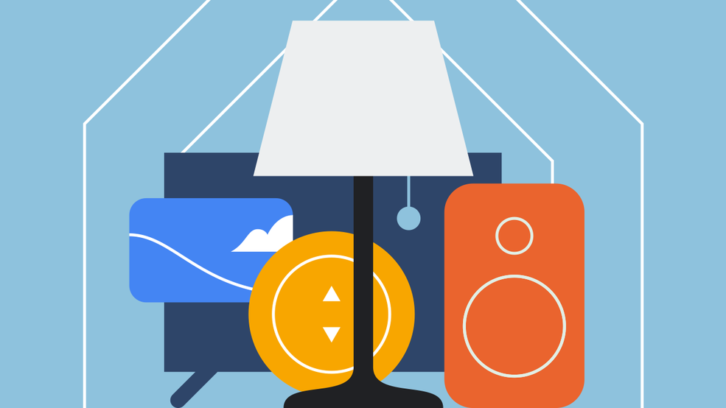
One of the best reasons to consider smart furniture is its ability to integrate with your other smart home devices. For example, smart lighting used within bookshelves can adjust its color temperature to match the time of day, working with smart window blinds that automatically lower during the hottest hours. You can use smart furniture to create a living, intelligent environment for yourself.
The Internet of Things (IoT) continues to grow daily, and we can expect that interoperability between different smart devices and furniture will become better and better over time. Just imagine you have a fully connected home. Your smart bed could gather data on your sleep patterns and communicate it to your smart coffee maker, which would then prepare your morning brew at the time you’re most likely to wake up. Sounds like the Jetsons, doesn’t it? The possibilities are truly exciting.
Personalization and Customization
Like most other things in the digital age, one-size-fits-all is being tossed aside in favor of personalization. Smart furniture is programmable and allows for the kind of customization that was completely impossible before. Not only can you adjust physical aspects like height or firmness, but you can also program furniture to recognize different users. Imagine a smart recliner that can identify different family members (through biometrics, for example) and automatically adjust comfort settings.
This move toward personalization is not just a gimmick; there really are serious benefits for ergonomics. Users would have better posture and more comfortable working conditions because their furniture can adapt to their body shapes and proportions, thereby contributing to a longer and healthier life.
Environmental Sustainability

It’s true – there are a ton of exciting features to be found in smart furniture. But it’s also helping to create a more sustainable world. Smart furniture uses built-in sensors and smart systems to optimize energy consumption. Smart wardrobes can detect when you’re choosing your outfit and light up only the section you’re looking at. Smart tables and desks come with solar panels built in so they can power themselves and other devices placed on them.
With more usage, they can also become better at energy consumption. For example, you have a smart table that tracks how often it’s used. It then prompts you to only heat or cool rooms that are frequently occupied. Your home’s overall energy consumption goes down, and you save energy.
Challenges for Smart Furniture
There are challenges with any new technology, and smart furniture is no exception. Privacy and ethics are the first things that come to mind. What if a hacker gained access to your smart bed, and got their hands on your health information? All hell would break loose, that’s what.
But to even come into contact with this drawback, you have to jump over price-related obstacles. Truth be told, smart furniture is expensive, and some people will have to take out a personal loan in order to cover the costs of buying the furniture outright.
However, this also ties into the quality of the furniture itself. Oftentimes, buyers who take out a loan to buy smart furniture go for flashiness instead of functionality, and end up with a piece that breaks quickly. Regardless if you’re using cash or a loan to make the purchase, make sure the furniture company is reputable. Check out their reviews and see how long their products hold up.
The Path Ahead
The world of smart furniture is continuing to evolve, and technological advancements and changing consumer needs will ensure this remains the case. Whatever seems cutting-edge today soon becomes tomorrow’s standard. The line between furniture and technology will continue to blur, but it’s clear that smart furniture is here to stay, and will continue to offer comfort, convenience, and better connectivity among home smart devices. We can expect a bright future for the market and homes that are not just nice to look at but more functional and responsive to our personal tastes and needs.
See also: Is Your Office A Magnet For Employees?





